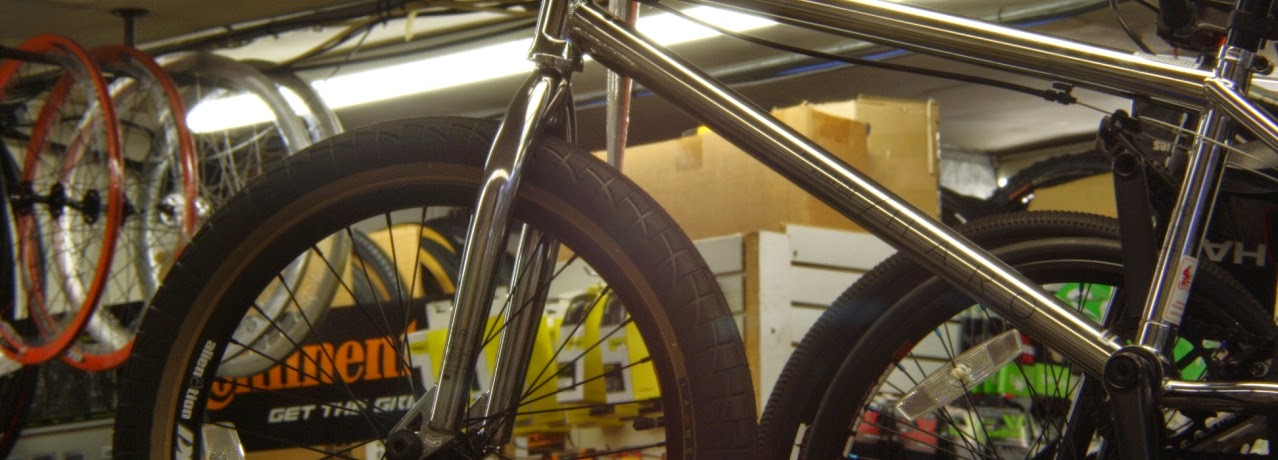 Preserve Your Drivetrain, Handle Shifts With Ease
Preserve Your Drivetrain, Handle Shifts With Ease
Learning to use the equipment that comes with your bike is extremely important, as it will help you to enjoy your ride more as well as extend the life of those parts. Shifting is no exception, and we have a few tips to help you improve that aspect of your riding.
An important rule to remember is to - reduce your applied pressure on the pedals during shifts. As drivetrains have improved over the years, the have been designed to shift no matter how much pressure is put on the pedals. However, if you ease up on the pressure just a bit, the shifts will be smoother and your chain, cogs and chainrings will last longer.
Here are some more tips to help keep your drivetrain in great working order:
Keeping Your Drivetrain Clean:
 Before we even get into proper shifting, it is important to make sure you keep your drivetrain clean and tuned up to extend the life of your drivetrain. We have chain cleaners for sale in the shop that can help get your chain clean and keep it that way.
Before we even get into proper shifting, it is important to make sure you keep your drivetrain clean and tuned up to extend the life of your drivetrain. We have chain cleaners for sale in the shop that can help get your chain clean and keep it that way.Every six months or so, inspect your chain and measure to see if it has been stretching.
Pick a chain pin on the top side and measure to any pin 12 inches away. Links are exactly one-inch long, so you should be able to measure exactly 12 inches between two pins. If the measurement is 12 1/8 inch or longer, it's time to replace the chain.
(Check Your Cogs too!)
Remember: cogs wear out at about the same rate as the chain. If you put on a new chain, you will eventually run into skipping cogs - which is at best annoying and at worst dangerous!
Remember to keep the front rings and rear cogs clean. Stay on the lookout for a post about how to clean your chain and drivetrain!
On The Road Tips:
Shift Before Hills:
Even though the hardest place to put less pressure on your pedals is when you are struggling to get up a steep hill. Try changing gears before the steep part of the hill so you can make the shift with out stressing the chain and pedals.
Front Shifts:
Remember when you are shifting the front derailleur that the chainrings are significantly different in size! This means your derailleur has to work hard to move the chain from one to the other. If you can add some finesse to this shift, you are much more likely to get a clean, smooth shift. And, you'll eliminate problems associated with high pressure shifts such as having the chain come off.
There are three or four set spots (shift ramps/shift gates) on the chainrings to make it shift. The chain (while moving forward) needs to contact these ramps to be pulled up onto or down over the chainring. It is very important to hold the shift until the chain comes into contact with a shift ramp. When the chain is under load (meaning there is force on the pedals) this is the ony spot where the chain will shift. Ideally shifting should be done with little load on the chain. When the chain is under load the derailleur will just flex and laugh at you instead of making the shift happen. When there is no load on the chain the derailleur will be able to move it.

Getting Your Chain BACK On:
Usually, you can shift the chain right back on the chainring if it falls off. This is usually impossible when climbing a hill, as you will lose momentum and have to stop. However, any time you are riding and you can coast for a few seconds, you can almost always get the chain back on by gently pedaling and shifting the front derailleur to move the chain toward the ring.
(When a chain comes off repeatedly, something is wrong and you should have us take a look at the front derailleur adjustment.)
Circle City Bicycles and Fitness
5506 Madison Ave.
Indianapolis, IN 46227
(317) 786-9244


No comments:
Post a Comment